The custom of "trokosi": why girls are given into sexual slavery in Africa
Categories: Africa | Children | World
By Pictolic https://pictolic.com/article/the-custom-of-trokosi-why-girls-are-given-into-sexual-slavery-in-africa.htmlIn ancient times, the custom of donating one's daughter to a powerful deity was very common. Fairy tales and legends remind us of those times, in which girls are given to be eaten by dragons or to serve magicians. Strangely enough, but such a practice exists today and is commonplace for some peoples of Africa.
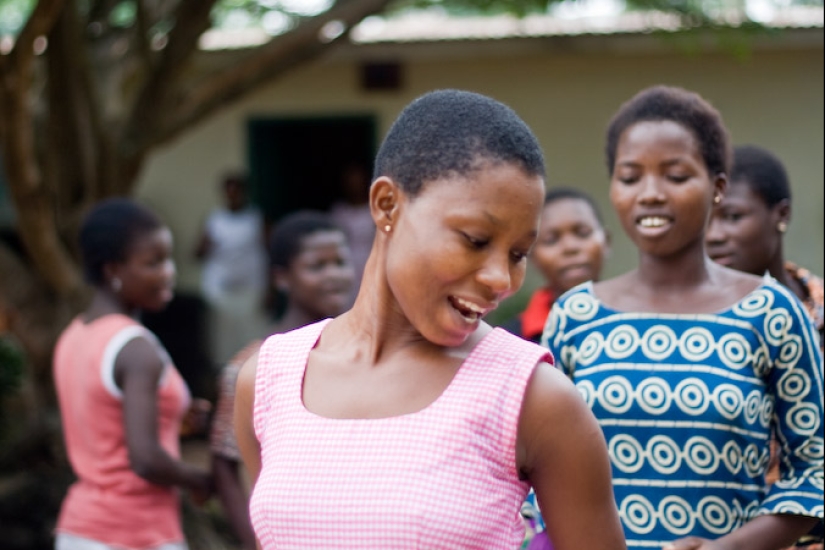
The custom of "trokosi", which has a history of more than one thousand years, is based on the fact that the family transfers a small, unsuspecting girl to the full disposal of the servants of the cult. The child is in the position of a slave and fulfills all the whims of his master, including sexual ones.
For some girls, such "obedience" ends after a few years, while for others it stretches for a lifetime. In any case, the fate of a woman who was sent to the temple as a child turns out to be tragic — the psychological trauma received as a result of such slavery leaves an imprint on her whole life.
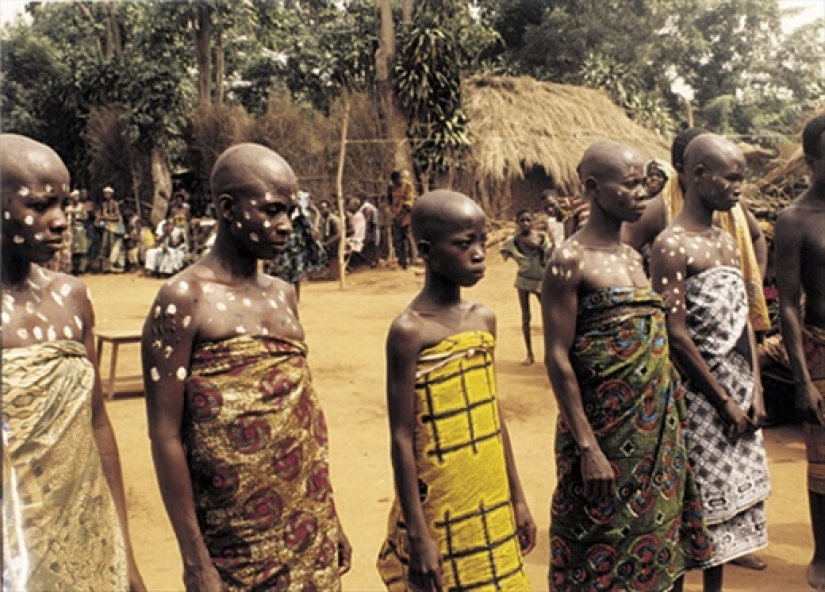
Temple slaves "trokosi"
Strangely enough, but the most common custom of "trokosi" is in Ghana, the most advanced and dynamically developing country in West Africa. Of the 30 million inhabitants of this republic, 22 million profess Christianity, 5 million Islam, and the remaining residents, of whom there are barely 5%, have remained committed to their traditional, pagan beliefs.
Most of the people who have retained faith in local gods live in the south-east of the country in villages that are remote from civilization. They are mainly representatives of the numerous Ewe people, who also inhabit the southern regions of neighboring Benin and Togo.
The power of the state is formal here and elders, sorcerers and priests run everything. Local residents firmly believe that a person who has committed unrighteous deeds will certainly be punished by the all-seeing numerous deities and their guilt can only be redeemed by a solid sacrifice.
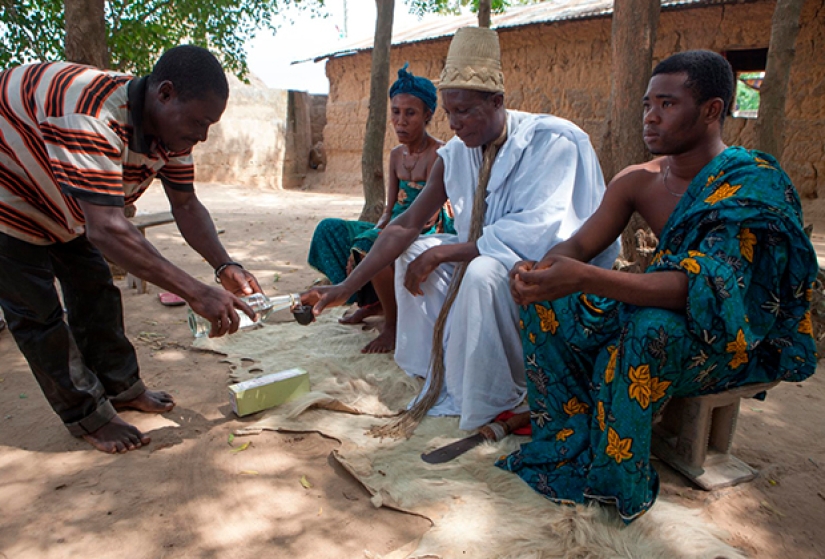
The priest of one of the pagan temples of Ghana receives visitors
In order to punish someone for meanness, insult or material damage, representatives of the Eva people go to a pagan temple and ask the gods to intervene in the situation. The deities punish unseemly deeds with diseases, the death of cattle, lack of luck or even death. At the same time, the anger of the higher powers is poured out not only on the culprit, but also on his entire family or even the whole genus.
The people of Eva are very superstitious and are used to seeing curses and the machinations of ill-wishers in any trouble, starting from a small domestic injury and ending with the disappearance of some personal belongings. To find out the cause of these or other problems, villagers go to the ministers of worship.
They clearly explain that the troubles fell on the family because of some unworthy act of their relative and this sin needs urgent redemption. To remedy the situation, it is usually suggested to leave a girl in the service of the gods, who will have to take the rap for the actions of relatives.
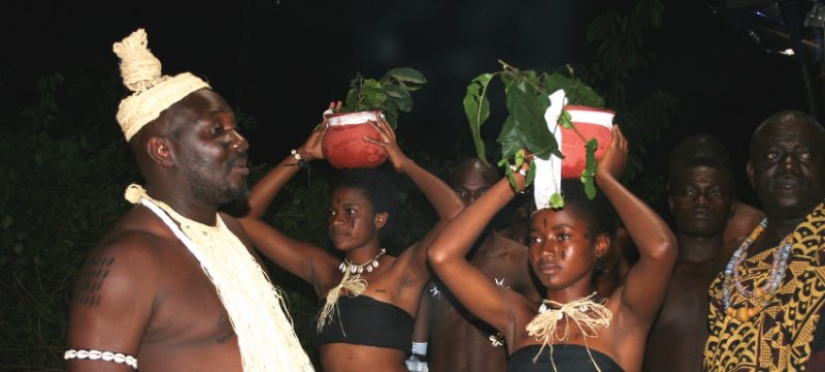
In remote areas of Ghana, priests have great power over people, manipulating them with the help of superstitions
The very word "trokosi" contains the essence of this disgusting phenomenon. The word "tro" in the Eva language means "deity", and "kosi" can be translated as a wife or concubine. However, this term is often used to denote a slave, which is most suitable for such a case.
It is customary to give priests to the temple not just a virgin, but a child. Some girls become "trokosi" at 5-6 years old. It is much less common for girls to fall into religious slavery, and even rarer for adult women who have their own children.
The choice of the person who will have to atone for the sins of the family remains with the elders of the clan. When choosing a candidate, the fact that he has nothing to do with the committed offense does not play the slightest role. Moreover, if the child escapes from the temple or dies, the council meets again and the family sends a new victim to the priests.
The slaves who arrived at the temple undergo a special ritual — their clothes and jewelry are taken away from them and forced to lie down on the ground. This simple rite means renunciation of the past life and full transfer to the property of the gods and their lustful and greedy priests.
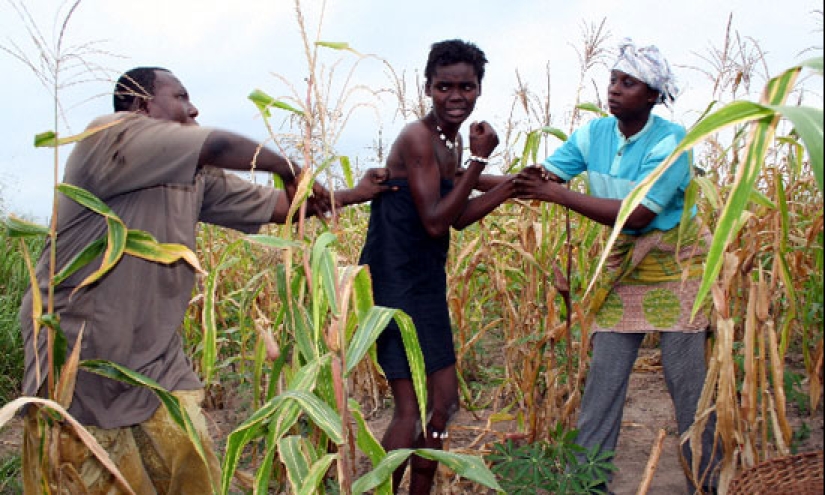
Beatings and bullying are common for Ghanaian temple slaves
After that, the "trokosi" girl gets a piece of rag instead of clothes, which from now on will make up her wardrobe. The new slave is immediately attracted to hard work on farms owned by priests and their relatives. From now on, her destiny is to constantly please the owner in order to avoid beatings, humiliation and hunger.
When a girl reaches puberty, the servants of the cult enter into sexual intercourse with them. This is necessary in order to consolidate the ritual of purification from sins. It is impossible to refuse — it is fraught with beatings and serious hardships. From the moment of the loss of innocence, the slaves fully serve the priests, their assistants, and sometimes numerous relatives in sexual terms.
On average, during such a "service", a temple concubine acquires 4-5 children. They immediately after birth become the property of the temple and full-fledged slaves for life. Thus, the number of "trokosi" is constantly growing and it is impossible to solve the problem without outside intervention.
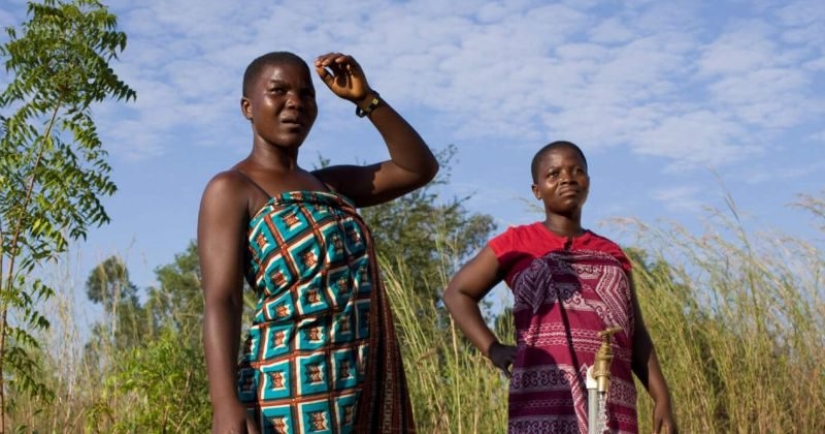
Society does not accept girls released from slavery back
Girls who were lucky enough to escape from the temple or who were freed from slavery by the authorities tell terrible things about their lives. Concubines live in terrible conditions and are ruthlessly exploited by their masters.
One of the girls named Enionam Tordzo was enslaved at the age of 18 when she was brought to the temple by her parents. She had thoughts of escaping, but Enion did not dare to carry out her plan. The girl understood perfectly well that she would not be able to return home, and if she ran away, the family would give one of her young sisters to the temple as a replacement.
Tordzo said that the working day of temple slaves begins no later than 4 o'clock in the morning. The girls first carry water, making its reserves for the whole day, then clean up in the yard and go to the fields, where they work almost all day long. They ate "trokosi" what they managed to get on their own or receiving handouts from the owner, if they pleased him with something.
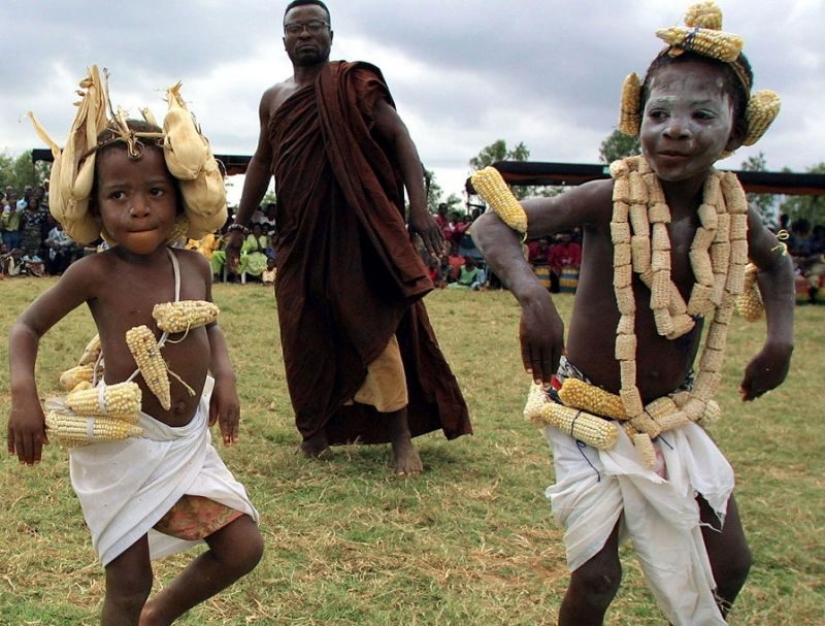
A priest and his young charges during a religious holiday
The priest himself did not worry at all about whether his wards were hungry or not. At the same time, the girls were constantly humiliated, beaten and raped. During the 10 years of his life at the temple, Enionam had six children from a cult minister and his relatives.
The girl and other slaves from her temple managed to get freedom as a result of lengthy negotiations between activists who acted on behalf of the Government of Ghana. But when she returned home, Tordzo realized that she was not welcome there. Her father was furious at this turn of events and demanded that she immediately return to the temple.
The Enionam family was horrified by her return and everyone was sure that the ancestral curse that she was redeeming would return strengthened many times. Unfortunately, the released "trokosi" become outcasts in society — they are bypassed and it is considered dangerous to touch them.
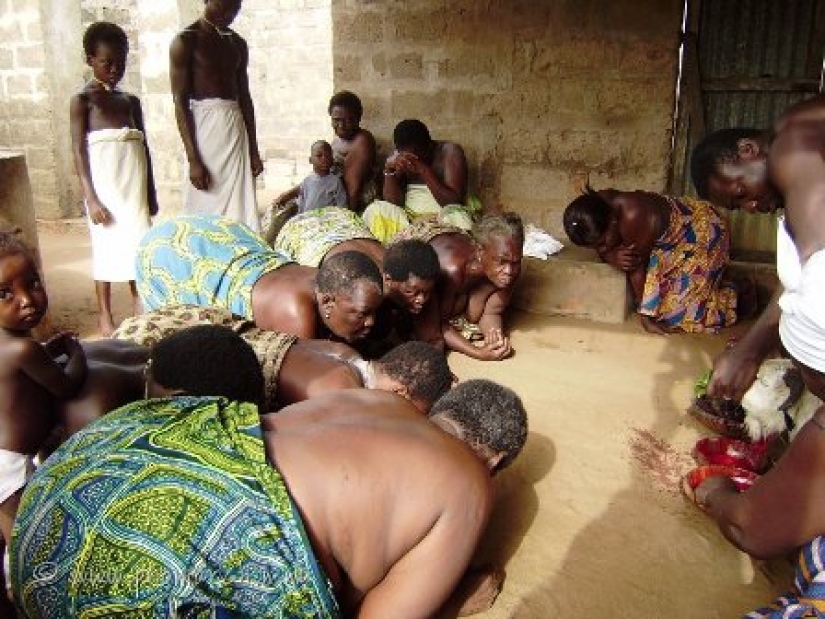
Many women remain in slavery all their lives
A very similar story was told by Mercy Senae, who came to the temple at the age of nine. Her master was especially lustful and he was not even embarrassed by the concubines' too young age. Every evening he came to the barn where his slaves lived and took one of them with him.
It was impossible to refuse — for any objection, the priest mercilessly beat the girls. Mercy remembers with horror that she spent many years in an atmosphere of complete despair and hopelessness, because she was sure that her whole life would be spent at the temple.
Oddly enough, the world only found out about the existence of "trokosi" in 1997. The disgusting custom became known thanks to the transfer of CNN correspondent Christiane Amanpour. The main character of a small investigation is Brigitte Sossa Perenyi, born in Togo, and at the age of 7 her uncle brought her to one of the temples of Ghana and, without explaining anything, left her among strangers.
The girl didn't even know the language spoken by those around her, which made her situation even more unbearable. When asked by journalists about what a child from another country is doing at the temple, the priest shamelessly replied that she was atoning for the sins of her uncle, caught in some kind of affair.
Later, the details of this disgusting story came to light — the girl's uncle took her away from the family by deception, telling her parents that he needed an assistant around the house and he was ready to take care of the girl as his own daughter. When the deception was revealed, the family was looking for Bridget, but her scoundrel relative refused to tell where she was and the search was unsuccessful.
Bridget was released after Amanpour's report was shown on television — an American Kenneth Perenyi came to the temple and bought the girl out of slavery, in which she spent a whole year. The activist adopted the child and took her to the USA, where Bridget started a new, happy life. The girl was lucky — she was enslaved before puberty and managed to avoid sexual violence.
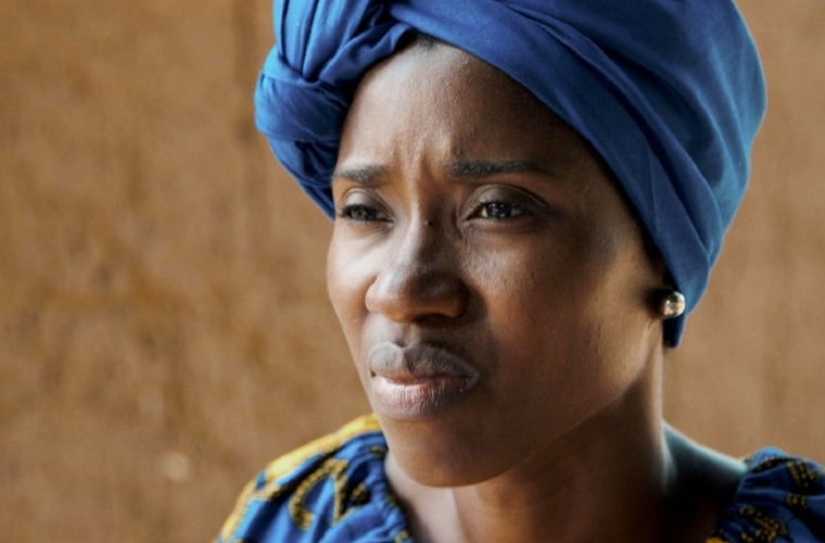
Former slave Bridget Sossa Perenyi
The story of Brigitte Sossa Perenyi, told to the whole world by CNN, caused a storm of indignation and thanks to her, the government of Ghana was forced to pass a law prohibiting temple slavery. Since 1998, any person who transfers or accepts another person into religious or ordinary slavery is considered a criminal and can receive 3-5 years in prison.
This approach has borne fruit — thousands of girls and women have been released from temples over two decades. Even the most irreconcilable ministers of the cult have to reckon with the law. Now the "trokosi" are at the temples not all their lives, but several years necessary for the atonement of sin. In addition, girls are allowed to attend school and even live outside the temple.
But such mitigation is only a half-measure — society refuses to accept concubines and they are still the property of the temple. At the first call, the girls must return to the owner and fulfill his whims and errands.
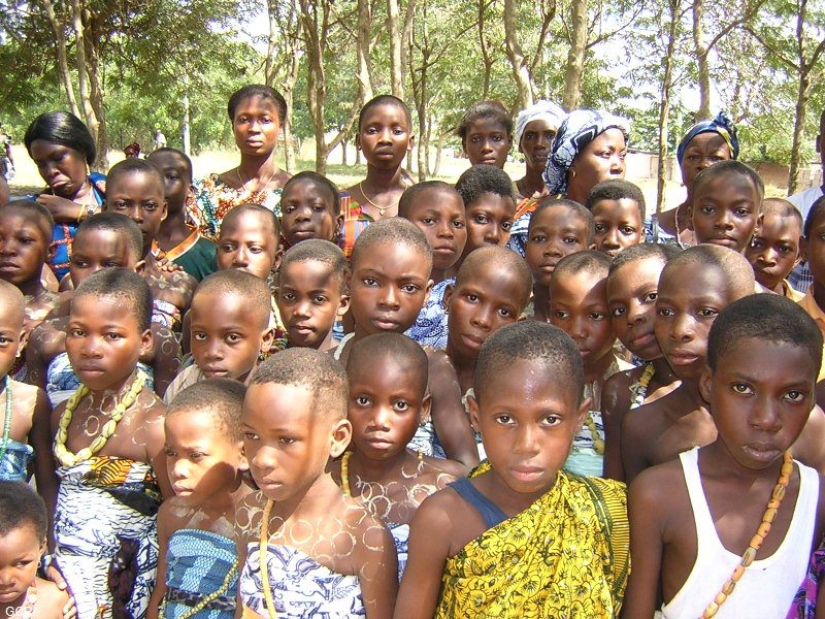
All these children were born "trokosi" at the temple and without outside interference are doomed to lifelong slavery
Separately, it should be said that Ghanaian officials are very corrupt and therefore very few religious figures have been held accountable for their crimes under the law. It also plays an important role that the relatives of the temple concubines are not interested in freeing the girls from slavery.
There are many cases when the case of "trokosi" reached the court, but did not receive a logical conclusion due to the failure of the injured party to attend the meetings. The Eva people firmly believe that the tradition of atonement for sins is part of their cultural heritage and therefore should be preserved. The elders convince ordinary people that the authorities, by banning "trokosi", destroy the culture and traditions of their people.
The priests, explaining their position to journalists, shamelessly lie. One of them, for example, in his interview stated about the excessive demonization of the custom and assured that the practice of "trokosi" has nothing to do with slavery, but, on the contrary, is a wonderful custom of self-sacrifice and redemption.
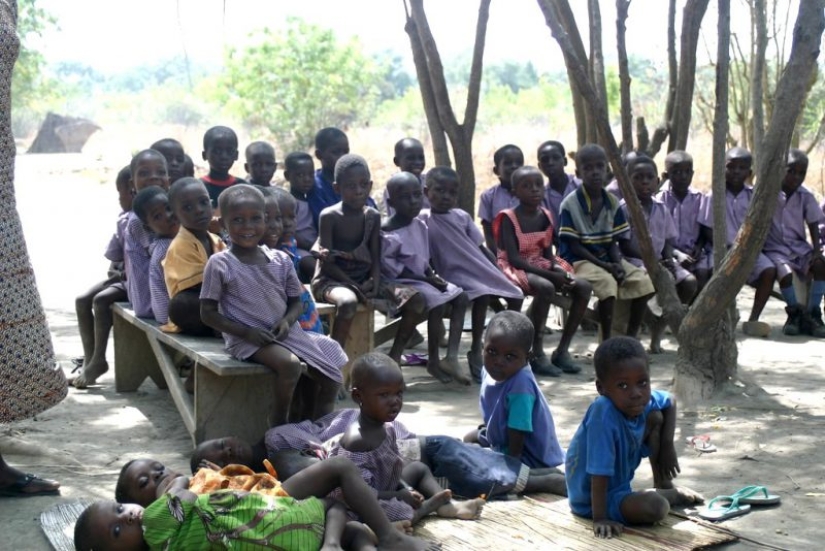
The world learned about the cult slavery in Ghana only in 1997 after the CNN broadcast
The priest of Torgbi Venanua, who released more than 200 slaves under pressure from the authorities, sincerely regrets their loss. The representative of the cult claims that the girls lived at his temple not as disenfranchised beings, but as real queens.
Enionam, who was one of the "queens" of this scoundrel, completely refutes his stories. The woman regrets that she does not have a photo where she is covered only with a piece of cloth, and a rope is hanging from her neck. The former "trokosi" believes that such a picture would help people from the government of Ghana to learn a little more about one of the most disgusting slave owners of the country.
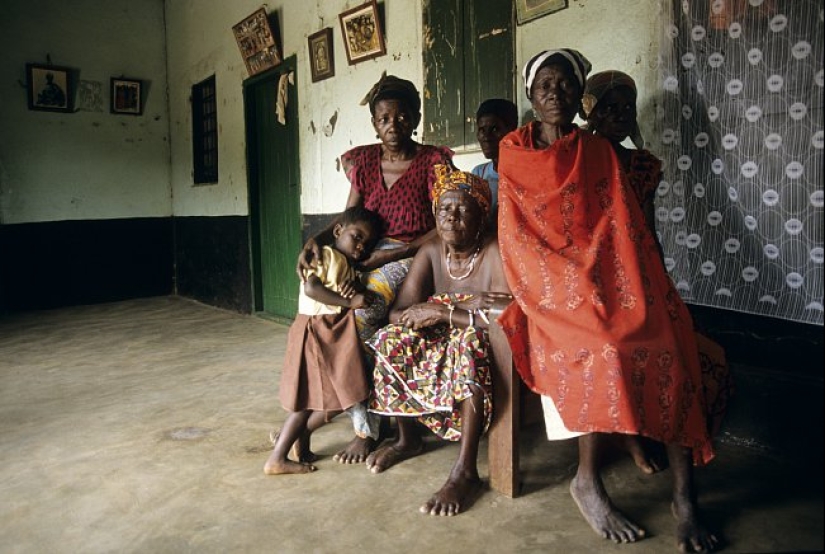
Despite the best efforts of activists and the Government, religious slavery continues to flourish in Ghana
The superstition of the population also plays a big role in the fact that the tradition cannot be completely eradicated. Even police officers believe in the wrath of the gods, so the local authorities try not to interfere in temple affairs. So far, the best result has been shown by such a way of combating religious slavery as replacing girls with pets or paying donations with money. Such a compromise is readily accepted by both families and the ministers of the cult themselves.
Despite the active struggle of human rights defenders and activists against the wild custom of "trokosi", it cannot be said that it has been defeated — hundreds of girls and women are still in slavery and a lot of effort needs to be made to free them.
Recent articles

We have repeatedly seen that people can be incredibly similar to their parents and even grandparents. But we will never get tired ...

For all lovers of fairy tales and beautiful views of our planet, the German photographer Kilian Schonberger has created a series of ...

If the post-apocalyptic paintings are fictitious events, the disaster movies are often removed based on real events. This, despite ...